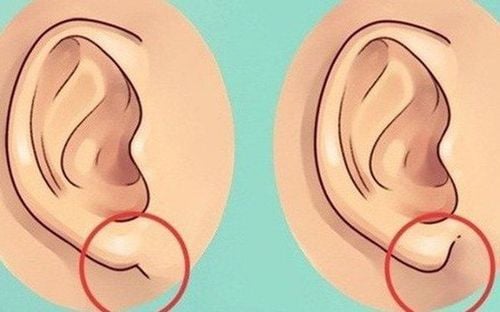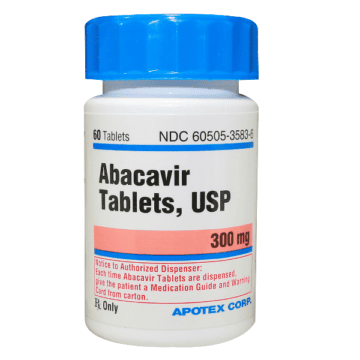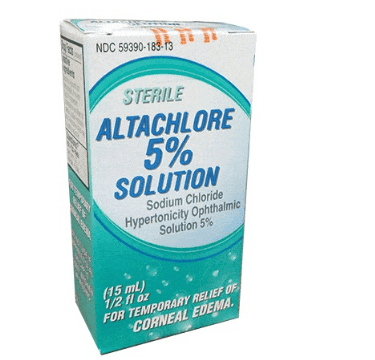This is an automatically translated article.
Red and swollen earlobes can cause pain and discomfort. Typical causes of earlobe swelling are infections, allergies, and trauma. Most earlobe swelling is treatable with over-the-counter medications and home remedies.
1. Causes of earlobe swelling
There are many causes of swollen earlobes. Each cause has its own symptoms.
Ear piercing
This is the most common cause of earlobe swelling. Ear piercings usually cause some pain and swelling, which should go away after a few days. However, swelling of the earlobe can also be caused by an infection during a piercing. Symptoms of ear piercing infection include: Redness, burning or constant pain, swelling, and yellow pus discharge. If the condition of the earlobe is swollen and painful for a long time or the piercing site is bleeding yellow pus, you need to see a doctor.
Allergies
Allergic reactions, especially to certain types of jewelry, can cause one or both earlobes to swell. In most allergic reactions, the nickel in earrings causes inflammation and swelling. Removing earrings and choosing to wear a nickel-free one can help relieve symptoms.
Injury
Any injury to the earlobe can cause swelling - even a minor injury like wearing an earring too tight. Like other causes of earlobe swelling, an injured earlobe can cause pain and soreness.
Ear hematoma
This is an external deformity of the ear, which occurs when blood collects in the outer ear after an injury. Ear hematomas are most commonly seen in competitive sports such as wrestling, boxing, and martial arts. In addition to swelling of the earlobe, the hematoma may bruise and cause pain. If the wound is not drained properly, it can lead to infection and disfigurement.
Mastoid Otitis
Mastoid Otitis is an infection of the mastoid bone, located in the inner ear. Symptoms of mastoid otitis, in addition to redness and swelling, include: Drainage from the inflamed ear, ear pain, fever, headache, decreased or lost hearing
Outer ear infection
Swollen earlobe is also possible caused by an infection of the outer ear, called otitis externa or swimmer's ear. The disease is most common in children between the ages of 7 and 12 and people who regularly swim. In addition to swelling, the main symptoms of an outer ear infection are: Ear pain, pain sensitivity, itchy ears, and red ears.
Insect bites
An insect bite on the earlobe can lead to itching and swelling of the earlobe. Caused by bedbugs or other insect bites. First aid will depend on the type of insect bite.
Abscess
An abscess is a bump under or on the surface of the skin, containing pus or fluid inside. Usually, this is the result of a bacterial infection. Abscesses can appear on any part of the body, and can also develop into an abscess on the earlobe. The swelling from an abscess can increase over time, so it's possible that the earlobe will continue to swell if the abscess is left untreated.
Depending on the cause of the abscess, other symptoms may be experienced such as: Fever, chills, nausea, ear wounds, ear infections, discharge from the infected area
Skin boils
Skin boils a skin infection deep below the surface of the skin that can be filled with pus. The infection involves the hair follicles and is often painful to the touch. The size of the boil can vary. Other symptoms may include: Fever, body aches, itchy ears, crusting or oozing.
Cysts
Skin cysts are called sebaceous cysts. They are simply abnormalities of the skin that are filled with fluid or semi-liquid. While not life-threatening, cysts can be uncomfortable. Since sebaceous cysts are most commonly found on the scalp, face, neck, and back, it is not uncommon to find cysts on the earlobes. The larger the cyst, the more painful it is.
Contact dermatitis
When a substance reacts with the skin, it can cause contact dermatitis. In addition to swelling, the skin may become itchy, red, and inflamed.
Poison oak, ivy, or sumac
Contact with the leaves or stems of poison oak, poison ivy, or sumac can lead to an allergic reaction, causing a skin rash. These plants secrete oils that cause skin irritation, stinging, and itching. If the earlobe comes into contact with these plants, it will become swollen. After a while, a rash will develop and spread, becoming more and more itchy. Eventually, bumps will form and turn into oozing blisters that then dry and scab over.
Rash
A rash is a noticeable change in the texture of the skin. It can be caused by a number of different factors, including: Allergies, medications, cosmetics, certain illnesses, like chickenpox and measles. If the rash is on the earlobes, the symptoms will depend on the cause of the rash.
Cellulitis
Cellulitis is a fairly common bacterial skin infection. It presents as a red and swollen area, often painful, and may be accompanied by a rash and fever.

Xỏ nguyên tai là nguyên nhân phổ biến nhất dẫn đến sưng dái tai
2. Swollen earlobe treatment options
There are several ways to treat swollen earlobes, however treatment will depend on the cause of the swelling.
Maybe try some home remedies first to reduce swelling. A cold compress can reduce blood flow to the swollen area, helping to ease symptoms. If a cyst on the earlobe is suspected, a warm compress may help. If the earlobes are painful, over-the-counter pain relievers may also help.
In case of bacterial infection, oral or topical antibiotics are needed.
For insect bites and other allergic reactions, an antihistamine or hydrocortisone skin cream can be used.
3. When to see a doctor
In most cases, swollen earlobes can be taken care of with simple home remedies. However, in certain cases it is necessary to seek help from a doctor. If home remedies don't relieve earlobe swelling and other symptoms, make an appointment with your doctor. Also, if the earlobe is oozing pus or if you have a severe allergic reaction, seek medical attention right away. In cases where there are several cysts or abscesses, the doctor may need to drain the site. If you have a bacterial infection, your doctor will prescribe antibiotics.

Trong đa số các trường hợp, dái tai bị sưng có thể được chăm sóc bằng các biện pháp đơn giản tại nhà
4. How to prevent earlobe swelling
To prevent swollen earlobes, stay away from things that can cause allergic reactions and rashes. For example, avoid earrings that contain nickel if you have had allergies in the past. Use only a cotton swab or damp cloth to clean the outside of the ear.
In conclusion, swollen earlobes can be a sign of many different diseases, so it is important to find the cause. In most cases, swollen earlobes can be easily treated at home. However, contact your doctor if swelling doesn't go down over time, home remedies don't work, or if you suspect it's a sign of something more serious.
Vinmec International General Hospital is one of the hospitals that not only ensures professional quality with a team of leading medical doctors, modern equipment and technology, but also stands out for its examination and consultation services. comprehensive and professional medical consultation and treatment; civilized, polite, safe and sterile medical examination and treatment space.
Please dial HOTLINE for more information or register for an appointment HERE. Download MyVinmec app to make appointments faster and to manage your bookings easily.
Reference source: healthline.com













